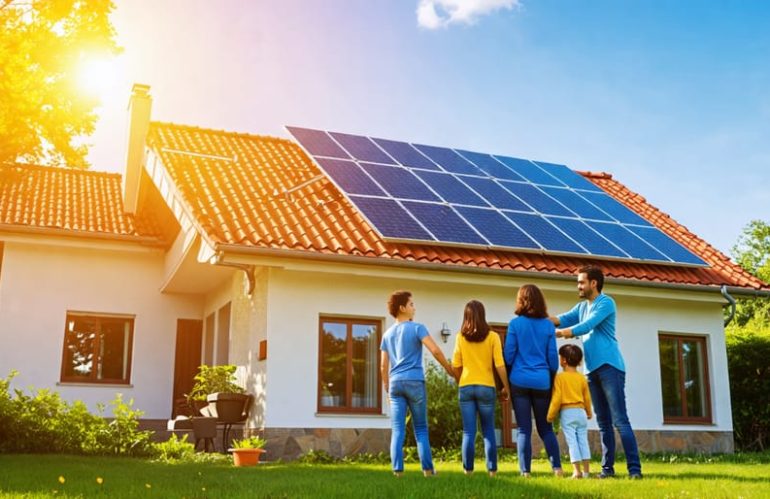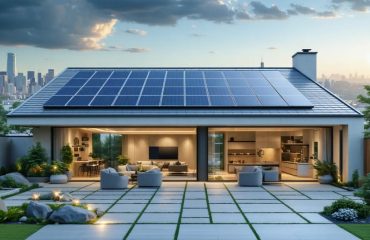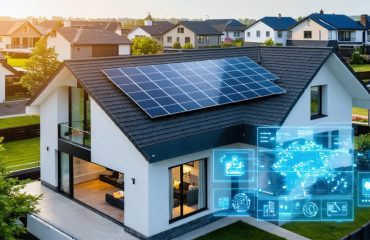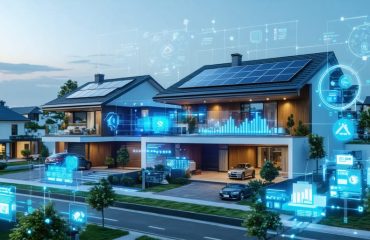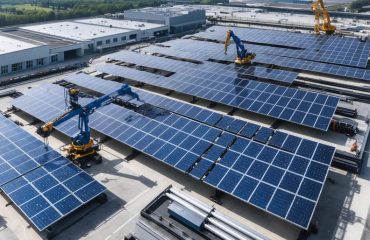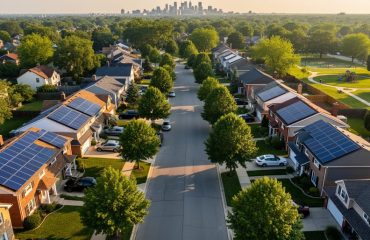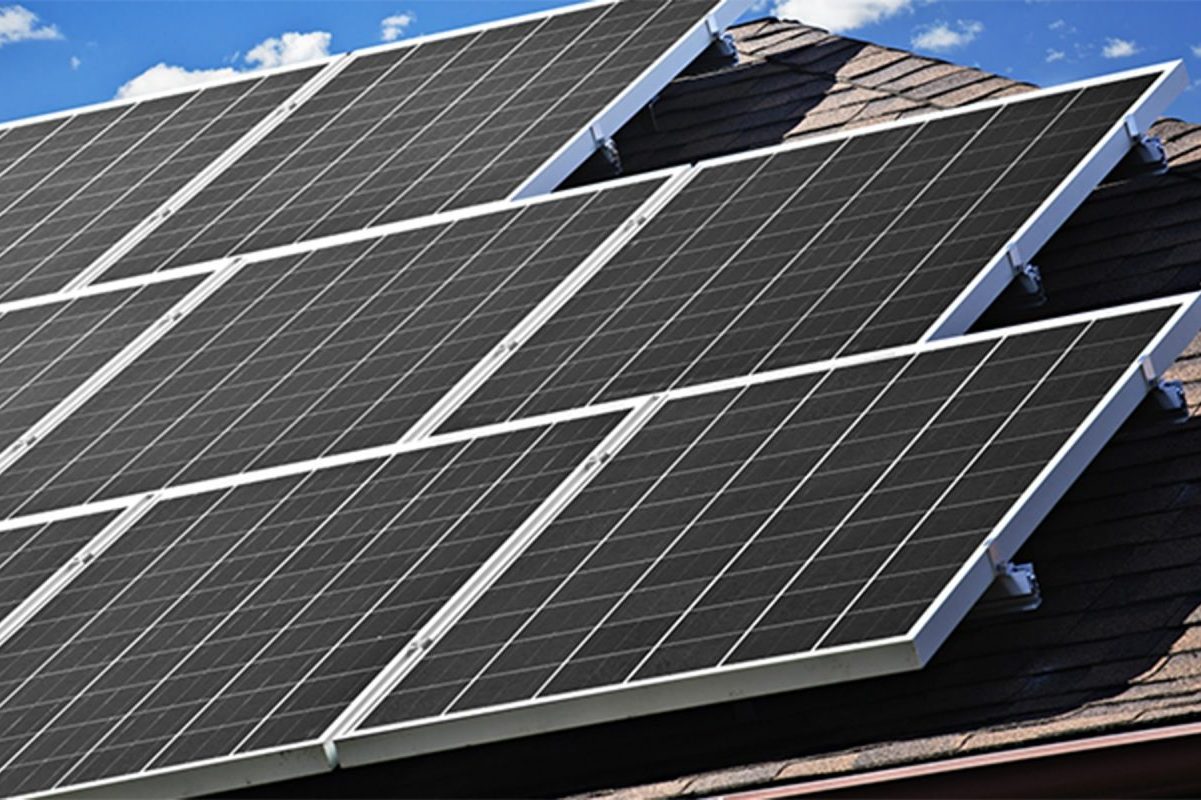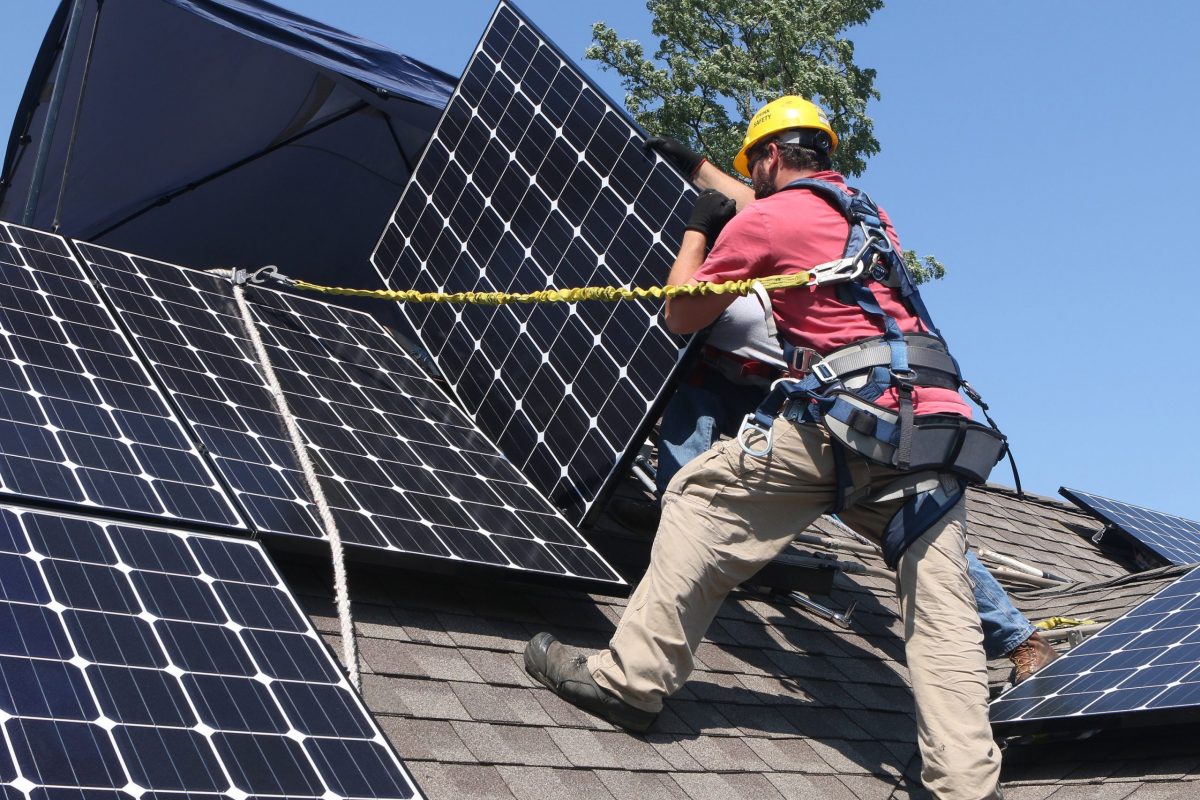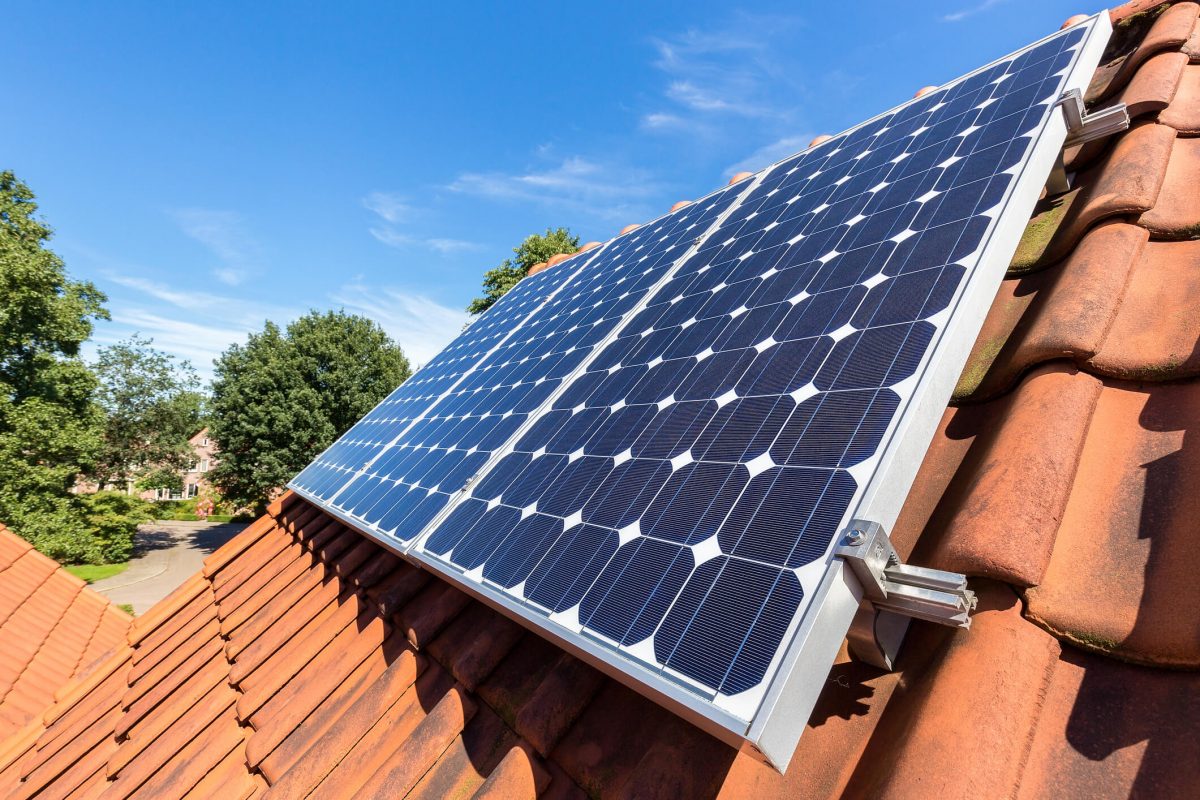Low-income families can slash their electricity bills and improve their quality of life by taking advantage of free solar panel programs. Government initiatives, non-profit organizations, and solar companies offer fully-subsidized installations for qualifying households, enabling them to harness clean, renewable energy without any upfront costs. By tapping into these assistance programs, struggling families can dramatically reduce their monthly expenses, gain energy independence, and contribute to a healthier environment for future generations.
The Benefits of Solar Power for Low-Income Families
Lower Electric Bills
Installing solar panels can lead to significant savings on monthly electric bills for low-income families. On average, households can reduce their utility costs by 50-90% after going solar. This translates to hundreds of dollars saved each month, providing much-needed financial relief. Low-income families who switch to solar energy often see an immediate reduction in their electricity expenses, freeing up funds for other essential needs. Over the 25+ year lifespan of the solar panel system, these savings add up substantially, potentially reaching tens of thousands of dollars. By eliminating or drastically reducing monthly energy bills, free solar panel programs offer low-income households a path to long-term financial benefits and stability. The money saved on utilities can be redirected towards groceries, healthcare, education, or building an emergency fund, ultimately improving the quality of life for these families.
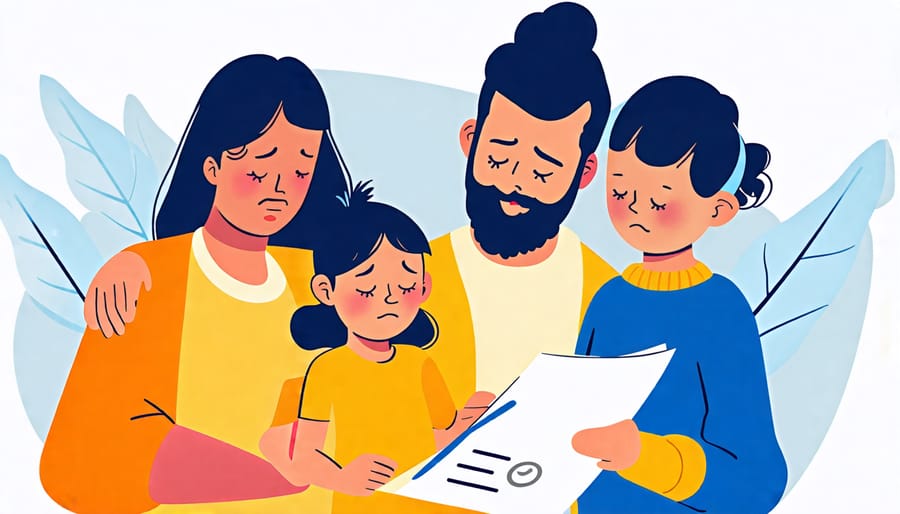
Improved Home Comfort and Health
Installing solar panels can significantly improve home comfort and health for low-income families. By harnessing the sun’s energy, solar power enables more efficient heating and cooling, reducing reliance on expensive and potentially harmful fossil fuels. Families can maintain a comfortable indoor temperature year-round without worrying about high utility bills. Moreover, solar energy reduces the emissions of pollutants and greenhouse gases associated with traditional power sources, contributing to cleaner air quality both inside and outside the home. This can alleviate health risks such as respiratory issues, allergies, and asthma, particularly for vulnerable individuals like children and the elderly. With solar panels, low-income households can enjoy a healthier, more comfortable living environment while also promoting environmental sustainability. The switch to clean, renewable energy not only benefits individual families but also contributes to a greener future for the entire community.

Government Incentives and Assistance Programs
Income-Based Solar Rebates and Grants
Low-income families can take advantage of various income-based solar rebates and grants to make the switch to clean energy more affordable. The federal government offers the Residential Renewable Energy Tax Credit, which allows homeowners to claim 26% of the cost of their solar installation on their taxes. Many states also have their own solar rebates and grant programs specifically designed for low-income households. For example, California’s SASH program provides up-front rebates to help offset the cost of going solar for families living in affordable housing. Other states like Colorado, Massachusetts, and New York have similar initiatives that provide significant financial assistance based on income level. Utility companies may also offer rebates or incentives for low-income customers who install solar panels. These programs aim to make the benefits of solar energy accessible to all, regardless of financial status. By taking advantage of these income-based solar rebates and grants, low-income families can greatly reduce or even eliminate the upfront cost of going solar, allowing them to start saving money on their energy bills right away while contributing to a cleaner environment.
Community Solar Projects
Another way for low-income families to access solar energy is through community solar projects. These initiatives allow multiple households to share the benefits of a single large solar installation, often located off-site. By participating in a community solar project, families can subscribe to a portion of the energy generated and receive credits on their utility bills, reducing their monthly expenses. This approach eliminates the need for individual rooftop installations and makes solar accessible to renters and those living in multi-unit buildings. Community solar projects also foster a sense of collaboration and shared commitment to sustainability within neighborhoods. To join a community solar project, interested families can contact their local utility company or search for projects in their area through online directories. Qualification requirements may vary, but many community solar programs prioritize low-income households and offer flexible subscription options. By embracing community solar, families can enjoy the financial and environmental advantages of clean energy without the upfront costs or maintenance responsibilities of individual installations.
Non-Profit and Utility Company Initiatives
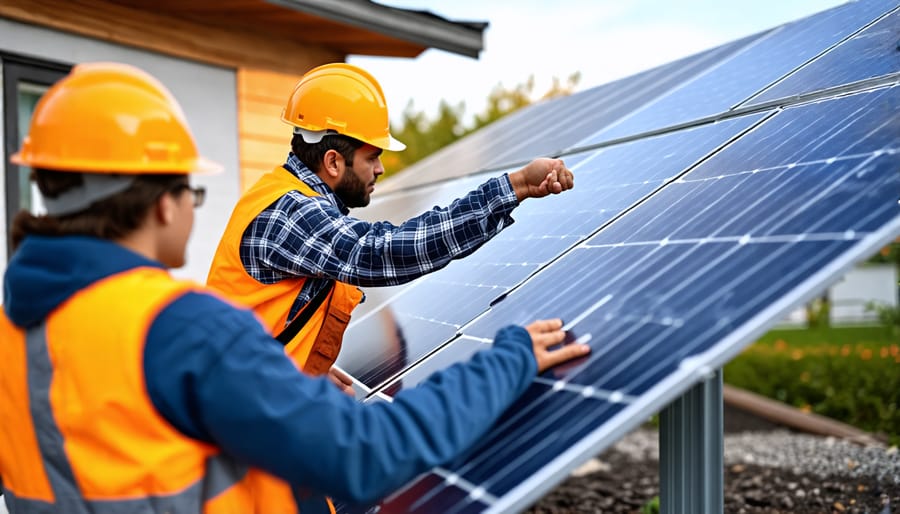
Non-Profit Solar Assistance
Several non-profit organizations across the United States are dedicated to helping low-income families access the benefits of solar energy. One such organization is GRID Alternatives, which has installed solar panels for over 15,000 families, saving them millions of dollars in energy costs. They partner with local communities, volunteers, and job trainees to provide no-cost solar installations and hands-on experience in the growing solar industry.
Another notable organization is Solar United Neighbors, which helps homeowners form solar co-ops to secure discounts through bulk purchases. They also offer the Solar Neighbors Program, connecting solar homeowners with low-income families to share excess solar credits, reducing their energy bills at no cost.
Lastly, Everybody Solar is a non-profit that focuses on providing solar power to other charitable organizations, such as homeless shelters, community centers, and affordable housing developments. By helping these organizations save on electricity costs, they can allocate more resources to their primary missions of serving those in need.
These are just a few examples of the many non-profit organizations working to make solar energy accessible to all, regardless of income level. By supporting their efforts, we can help create a more sustainable and equitable future for everyone.
Utility Solar Programs for Low-Income Customers
Many electric utility companies now offer solar assistance programs specifically for low-income customers. These initiatives aim to make clean energy more accessible and help families reduce their electricity bills. Some utilities provide free solar panel installations, covering the entire cost of equipment and setup. Others offer substantial subsidies or discounts, significantly reducing the out-of-pocket expenses for qualifying households.
To participate, customers typically need to meet certain income thresholds and own their homes. Renters may still benefit if their landlord agrees to the installation. Utility solar programs often prioritize seniors, people with disabilities, and families with young children. In addition to the upfront savings, participants can look forward to lower monthly energy costs for years to come.
By embracing these opportunities, low-income families not only improve their financial situations but also contribute to a greener future. Utility-sponsored solar programs create a win-win scenario, empowering underserved communities while promoting clean energy adoption. As more companies develop such initiatives, the dream of affordable, sustainable power is becoming a reality for countless households in need.
How to Qualify and Apply for Free Solar Panels
To determine if you qualify for free solar panels, start by checking your household income and whether it falls below your state’s low-income threshold. Next, verify that you own your home and have a suitable roof for solar panel installation. Contact your local government or utility company to inquire about available assistance programs, such as the federal Weatherization Assistance Program (WAP) or state-specific initiatives.
Once you’ve identified a program, gather the required documentation, which typically includes proof of income, home ownership, and energy bills. Fill out the application form accurately and submit it along with the necessary paperwork. The program administrator will review your application and may schedule a home assessment to evaluate your roof’s suitability for solar panels.
If approved, the program will cover the cost of solar panel installation, potentially saving you thousands of dollars in upfront expenses. After installation, you’ll enjoy reduced energy bills and a more sustainable home. To learn more about how to qualify and apply for free solar panels, consult with local solar installers or reach out to your state’s energy department for guidance on navigating the process.
Conclusion
Going solar can provide significant financial relief and an improved quality of life for low-income families struggling with high energy bills. By taking advantage of the solar assistance programs available, qualifying homeowners can access the benefits of clean, renewable energy without the burden of upfront costs. These programs make solar accessible to those who need it most, helping to create a more equitable and sustainable future for all. If you believe your household may be eligible for solar assistance, reach out to your local government or non-profit organizations to learn more about the options available in your area. Embracing solar power can be a life-changing decision, providing long-term savings, increased home value, and a reduced environmental impact for years to come.

